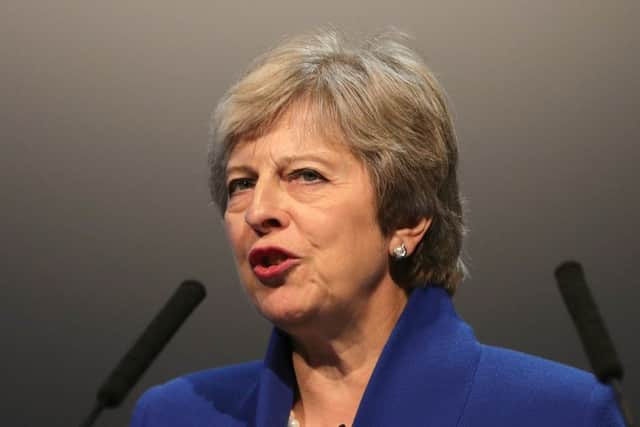Hard, soft, in-between ... no-one knows what the border will look like


Nesbitt is right: and bizarre is the only word to describe it. Yet, to be honest, I am not surprised. At 8.15am on June 24 2016, a few hours after the referendum result was called for Leave, David Cameron emerged from Number 10 to announce his resignation as prime minister: “Above all this will require strong, determined and committed leadership.”
What became clear – scarily clear – over the next two days was that Cameron didn’t have a Plan B. So he was, in fact, running. Having negotiated a candyfloss package with the EU in the run-up to the referendum (and it’s worth bearing in mind that the EU hadn’t really done much in the way for a Leave vote, either – hence the flimsiness of the package) he had already proved that he wasn’t strong or determined. But it was his immediate response to the result and the absence of available options which proved how utterly useless he always was as prime minister.
Advertisement
Hide AdAdvertisement
Hide AdThe Irish, on the other hand, had prepared. They had experience of losing referendums and, very early on, were concerned by the ‘air of complacency hanging over Cameron and Downing Street’. As Tony Connelly notes in Brexit and Ireland: The Dangers, The Opportunities, and the Inside Story of the Irish Response (a must-read if you want to understand the challenges to Ireland): ‘There had been intense preparations in Dublin in the final weeks of the referendum campaign. There was one fundamental imperative: if Britain voted to leave the EU, the Irish state would have to show its citizens and the world that it could withstand the immediate impact and that, no matter what, Ireland would be remaining in the EU. They had war-gamed three scenarios ... and the document for the Leave scenario was much thicker.’


The Irish had no choice but to prepare for all options. Brexit will – it already has – have a bigger impact on them than on any other EU member. It has already changed the nature of the relationship between London and Dublin and between Dublin and Belfast. It has cast a shadow of concern over the Good Friday Agreement. It is adding a further dimension of instability over what had already become an increasingly fractious relationship between the DUP and Sinn Fein. And while I think the just-published research from BrexitLawNI (which suggests that Brexit could ‘reignite the conflict’) is overegging the issue, I don’t dismiss the possibility that a ‘bad Brexit’ deal could encourage lawlessness and recklessness in some quarters.
Ireland is doing what any state would do, should do, when confronted with difficult, unforeseen outcomes. My own concern – as someone who supported Leave – is that the UK government still seems remarkably unprepared for what happens after March 30, 2019. Theresa May’s Chequers plan has been rejected by key elements of her own backbenches and may yet lead to her downfall in a few weeks if there isn’t demonstrable evidence of grassroots support for her at the Conservative conference at the end of the month. There do appear to be enough MPs to trigger a leadership contest; but even if she is toppled there is very little time for her replacement to have a deal in place before the March deadline.
The publication of the European Research Group’s (of which Rees-Mogg is chairman) policy document on Wednesday was meant to provide a possible route for Theresa May to follow; yet it also seems flimsy to me: ‘The EU will be able to maintain the integrity of its internal market without erecting a hard border along its border with Northern Ireland. At the same time the United Kingdom will be able to develop a fully independent trade policy rather than remaining a rule-taker.’ I genuinely have no idea what that means. If it’s not a hard border, then how soft is soft? For obvious reasons it cannot be what it is now – a border in name only. And a border which has substance and physical presence will make a potentially huge difference.
Advertisement
Hide AdAdvertisement
Hide AdWhich brings me back to Nesbitt’s point: we need to ‘broaden knowledge of the expected impacts and options available’. Six months away from our expected departure date and we don’t have a single piece of hard evidence from the government, the ERG or even Sammy Wilson about what the solution to the border question will be. To be quite frank about it, I’m actually sick to death of the mantra, “We don’t want a hard border. There’ll only be a hard border if the EU decides there’ll be a hard border. And we won’t accept the backstop solution either.”
I’m not entirely sure what a hard border would look like. I’m not sure what a soft border would look like. I’m not sure what a ‘something in between’ border would look like. But I do know that we don’t, to all intents and purposes, have a border now; but we’re likely to have something fairly soon. Does it not make sense that the parties have that debate and that there are ‘hosted engagement sessions ... to allay fears’? At this point the border solution seems to lie somewhere between the views of Theresa May and the ERG. I’m not persuaded that’s a particularly comfortable place for unionists to be.